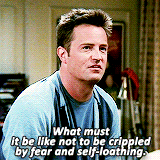Until recently, the phrase “anti-bullying” wasn’t likely to appear under the radar in a search for “contemporary social justice issues.” Only in the last several years has it gained initiative as a proactive movement, with related organizations slowly gaining momentum. Yet still, when discussing social activism, compared to racism, sexism, and other critical issues, bullying tends to take a backseat, which seems reasonable —except that it’s not, and here’s why:
Bullying is more than a petty, middle school problem. It stems from one person exercising a damaging form of power over another. More importantly, if left unaddressed, it can contribute to full-fledged societal defects like intolerance, sexual harassment, low self-image and eating disorders. So in the matter of preventing social injustices, why not start at the source?
Sometimes, a societal problem can’t be resolved by only relying on a top-down approach, meaning protesting a problem by creating a set of rules to follow. Take for instance, littering. Environmentalists can legislate laws against it, and on the surface, people will stop trashing their streets. The real issue is lacking value for the natural world, which remains unresolved. Similarly, in the matter of bullying, schools can implement consequences, but without changing the moral climate of the building, the potential for bullying to become intolerance remains intact.
So what makes us so hesitant to actually mobilize against bullying? Part of the reason lies in difficulty defining the issue. Try typing “Bullying” into Google images and see what comes up. For the most part, you’ll only find three types of pictures. First, a hulking preteen grabbing a scrawny boy by the collar. Second, a sad little girl with an out of focus group of her peers giggling behind her. Third, a “STOP BULLYING” stop sign. It’s evident that all of these categories fail to communicate the issue’s underlying complexity.
Moreover, bullying occurs when someone is devalued or dehumanized in order to justify their mistreatment. It’s subtle, it’s personal, it’s emotional and it can occur in dozens of forms and stem from a variety of motivations. A 2003 study from Loyola University done by Suzy Fox and Lamont E. Stallworth examined a long list of multi-factored situations that can qualify as bullying.
“The umbrella concept for these various conceptualizations of ill-treatment and hostile behavior toward people at work ranges from the most subtle, even unconscious incivilities to the most blatant, intentional emotional abuse. It includes single incidents and escalating patterns of behavior,” wrote Fox and Stallworth in their study.
In short, mitigating the image of bullying to a simplistic conflict illustrates an enormous failure in recognizing the issue at all.
The solution relies on a balance between two approaches. One half is prevention. This involves establishing consequences for all forms of bullying, starting a societal conversation about why it is so destructive and integrating moral direction within curricula. The other half is resilience. This involves promoting self-worth from a young age so that potential victims are armed with the confidence to stand up for themselves.
On a final note, it’s equally important to turn inward and identify the bully in ourselves. As always, it’s easy to become a victim, but if we’re truly aspiring to change a society, we must first be ready to change as individuals.








































